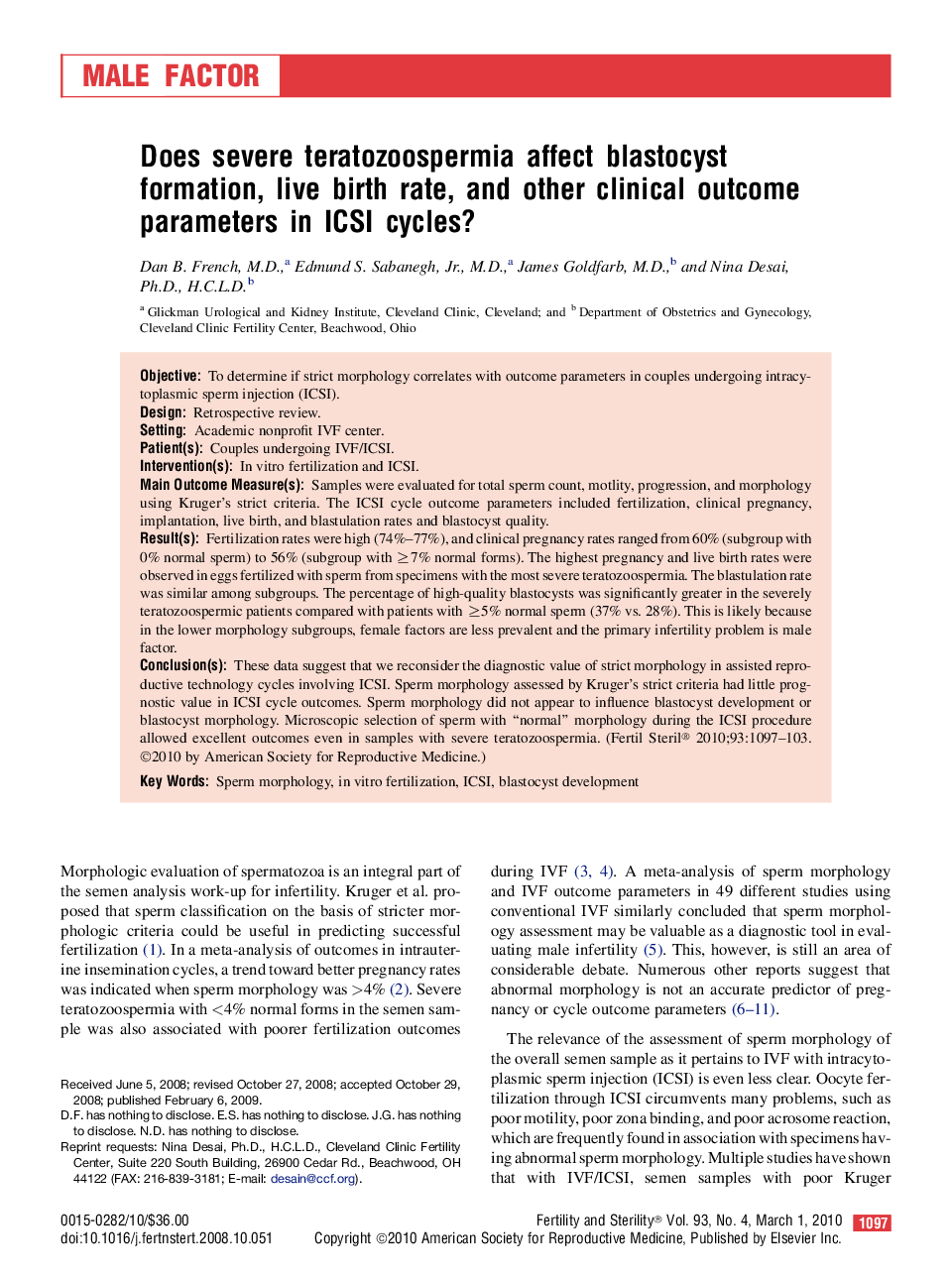| Article ID | Journal | Published Year | Pages | File Type |
|---|---|---|---|---|
| 3933521 | Fertility and Sterility | 2010 | 7 Pages |
ObjectiveTo determine if strict morphology correlates with outcome parameters in couples undergoing intracytoplasmic sperm injection (ICSI).DesignRetrospective review.SettingAcademic nonprofit IVF center.Patient(s)Couples undergoing IVF/ICSI.Intervention(s)In vitro fertilization and ICSI.Main Outcome Measure(s)Samples were evaluated for total sperm count, motlity, progression, and morphology using Kruger's strict criteria. The ICSI cycle outcome parameters included fertilization, clinical pregnancy, implantation, live birth, and blastulation rates and blastocyst quality.Result(s)Fertilization rates were high (74%–77%), and clinical pregnancy rates ranged from 60% (subgroup with 0% normal sperm) to 56% (subgroup with ≥7% normal forms). The highest pregnancy and live birth rates were observed in eggs fertilized with sperm from specimens with the most severe teratozoospermia. The blastulation rate was similar among subgroups. The percentage of high-quality blastocysts was significantly greater in the severely teratozoospermic patients compared with patients with ≥5% normal sperm (37% vs. 28%). This is likely because in the lower morphology subgroups, female factors are less prevalent and the primary infertility problem is male factor.Conclusion(s)These data suggest that we reconsider the diagnostic value of strict morphology in assisted reproductive technology cycles involving ICSI. Sperm morphology assessed by Kruger's strict criteria had little prognostic value in ICSI cycle outcomes. Sperm morphology did not appear to influence blastocyst development or blastocyst morphology. Microscopic selection of sperm with “normal” morphology during the ICSI procedure allowed excellent outcomes even in samples with severe teratozoospermia.
